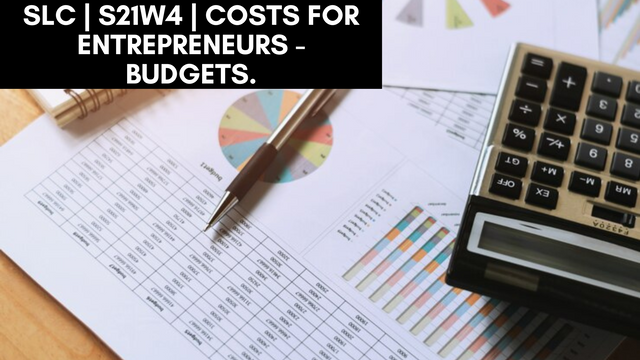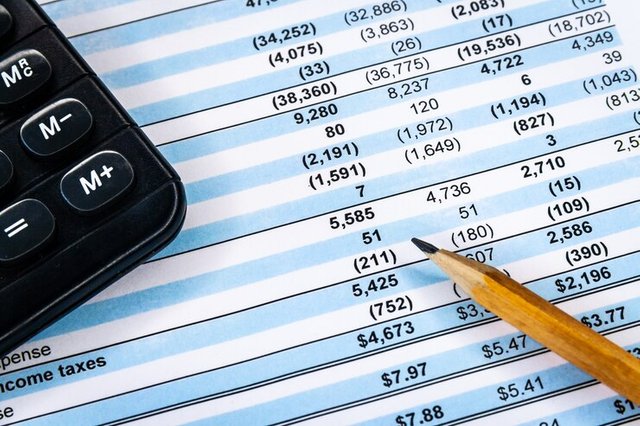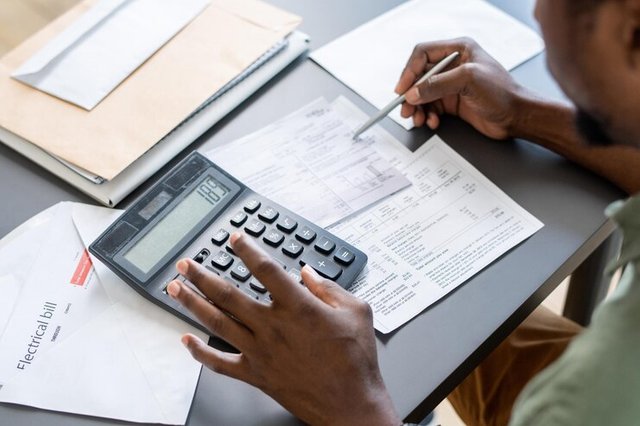SLC | S21W4 | Costs for entrepreneurs - Budgets.
|
What is budgeting and how does it relate to costing?
Every one of us has a financial plan and not only businesses. Some people, see budgeting as a plan of action that is set to accomplish whereas to businesses, scholars, and myself, budgeting is simply the process of creating a financial plan for a specific period, outlining expected expenses, savings, and income.
Also, budgeting refers to the tools that are used by businesses to allocate resources effectively and achieve the financial goals of the business. Businesses value budgeting so much because it helps in planning the future needs of a business, ensuring financial stability, and controlling of expenses of a business without budgeting a business will have no direction in spending its resources.
On the other hand, costing which we have learned about before now, is simply the process of determining the actual cost of production, project, or service. Costing involves businesses analyzing all direct cost and indirect costs of production to know how much (total sum) is spent on delivering or producing goods. Note; materials, Labor, and overheads are classified as direct and indirect costs which we have learned before now.
How Budgeting Relates to Costing
Here I will be looking at the four ways budgeting relates to costing which these ways are;
| Foundation for Budgeting: |
|---|
What is needed to provide a realistic budget is the detailed information that is provided by costing without cost data information it will be difficult for a business to prepare its budget which makes budgeting relate to costing.
| Decision-making: |
|---|
Correct costing information supports informed budgeting decisions by identifying the areas where costs can be optimized and adjusted.
| Comparison and Control: |
|---|
In a business establishment, costing helps monitor whether what the business is targeting is being met by comparing its actual costs against the budget, whereas budgeting sets financial targets.
| Profitability Assessment: |
|---|
Costing ensures that the budget of a business aligns with the business profitability goals via analyzing margins and cost structures.
In conclusion to the best of my understanding, costing and budgeting work hand in hand to manage the finances of a business more effectively, by ensuring that all resources of a business are used efficiently while achieving the financial objectives of the business.
Explain the importance of budgeting in determining costs.
 |
|---|
When it comes to determining costs budgeting is important in determining costs because budgeting provides a structural framework for monitoring, controlling, and planning expenses. Let's take a look at how budgeting is important in determining costs as we have shared below 👇.
Establishing Financial Limits: Budgeting ensures that all planner activities or operations stay within available financial resources. Also, budgeting helps to set a financial boundary for departments, personal expenses, and projects.
Predicting Costs: Budgeting enables individuals or businesses to anticipate financial needs and overspending which can lead to bankruptcy. Also, budgeting needs forecasting future expenses, which helps in identifying and estimating the cost that is associated with specific tasks services, or products.
Resources Allocation: With the help of budgeting, resources are allocated to different cost activities or centers based on priority and expected outcomes. Also, it ensures that goals or essential operations are well-funded adequately while reducing waste.
Cost Control: budget stands as the benchmark for comparing planned costs against actual costs. Also, budgeting helps to address and analyze the variances between actual cost and budget to help avoid unnecessary spending.
Strategic for Decision Making: Budgeting helps to provide a clear picture of the expected costs of a business, enabling sound financial decisions. For instance, businesses can decide whether to invest in new projects, cut expenses based on budgeted costs, or increase production.
Budgeting is far beyond planning for future spending as it goes beyond that in helping businesses manage resources and serves as a reminder of how resources are to be used.
Prepare the budget as explained, for the preparation of cakes. Consider a 4% adjustment.
 |
|---|
For us to prepare a budget for the preparation of cakes we will have to include the components that are the key cost and apply an adjustment of 4% for inflation or any contingencies below we can see how it can be done.
Cake Preparation Budget
Ingredients Costs:
| Ingredients | Amount |
|---|---|
| Sugar | 300 |
| Flour | 400 |
| Eggs | 200 |
| Butter | 600 |
| Flavorings & Decorations | 500 |
| Total Ingredients | 2000 |
Labor Costs:
Baking, mixing and decoration time (5 hours @ ₦200/hour) = ₦1000
Total Cost for Labor = ₦100.
Overhead Costs:
| Items | Amount |
|---|---|
| Gas/Electricity | 3000 |
| Equipment maintenance | 2000 |
| Miscellaneous (packaging) | 1000 |
| Total overhead | 60 |
The subtotal cost for overhead is ₦6000
Total Cost (Before Adjustment)
- Ingredients + Labor + Overheads = ₦2000 + ₦1000 + ₦6000 = ₦9000
For 4% Adjustment
- Adjustment = ₦9000 × 0.04 = ₦360
- Adjusted Total Cost = ₦9000 + ₦360 = ₦9360
Summary of Final Budget
| Ingredients | 2000 |
|---|---|
| Labor | 1000 |
| Overheads | 6000 |
| Adjustment | 360 |
| Total Budget | 9360 |
From the above, we can see that the budget ensures that all costs, including a 4% buffer, are accounted for when preparing cakes. The quantities or hourly rates can be adjusted.
Prepare the budget as explained, for the hairdressing service. Consider a 3% adjustment.
Here I have prepared a budget for hairdressing service as requested including a 3% adjustment for inflation or contingencies:
Hairdressing Service Budget:
Materials Costs
| Shampoo, conditioner, and styling products | 5000 |
|---|---|
| Equipment maintenance (scissors, clipper, combs, etc) | 3000 |
| Disposable items (gloves, caps towels) | 2000 |
| Total Materials | 10,000 |
Labor Costs
- Hairdressers time (4 hours @ ₦500/hour): ₦2000
- Total Labor Costs ₦200
Overhead Costs
- Booking and administrative costs: ₦400
- Rent/utilities for salon (shared per client): ₦1,00
- Total overhead ₦1400
Total Cost (Before Adjustment)
- Materials + Labor + Overheads = ₦10000 + ₦2000 + ₦1400 = ₦13400
For 3% Adjustment
- Adjustment= ₦12000 × 0.03 = ₦402
- Adjusted Total Cost ₦13400 + ₦402 = ₦13802
Summary of Final Budget
| Materials | 10000 |
|---|---|
| Labor | 2000 |
| Overheads | 1400 |
| Adjustment | 402 |
| Total Budget | 13802 |
From the above, we can see that the budget includes l anticipated costs for a single hairdressing service with a 3% for unexpected expenses which can be modified according to quantity or hours.
I am inviting; @dove11, @simonmwigwe, and @ruthjoe
Cc:-
@yolvijrm
Greetings @josepha
1.- You have described roughly what a budget is, and how it relates to costs, understanding that both are an important source of information for production performance in terms of profit.
2.- You have presented the importance of the budget in the determination of costs, which is vital for the control of income and possible expenses in a given time.
3.- You have presented and developed the proposed exercise, and the 4% adjustment, sharing an acceptable presentation of the results.
4.- You have developed the proposed exercise, and the 3% adjustment, sharing an acceptable presentation of the results.
Thanks for joining the contest
Dear @josepha
Your explanation of budgeting is excellent and detailed. You have clearly highlighted the relationship between budgeting and costing and their critical role in business operations. The preparation of budgets for cake-making and hairdressing services, including adjustments, has been demonstrated effectively. This not only helps in understanding costs better but also ensures the efficient utilization of financial resources. Great work!
Thanks for your lovely support 🙏